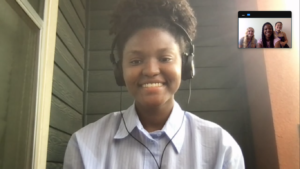By Blair Martin, Cassandra Crabb and Jasmine Shi
As students return to campus in the fall, they will need to make decisions about getting involved with student media and consider the impact it may have on their prospective careers.
As media careers get more competitive, college student journalists and recent alumni said the experience of writing for a newspaper or a college television station allowed them to get a better understanding of the skills necessary in the industry.
“We have a very small field that’s shrinking, and I think the default mindset is frequently ‘these people are cool and I like them, but I need to beat them if I want to get a job,’” said Daniel Papscun, a senior majoring in journalism at American University.
With its consistent layoffs and competitive nature, the journalism industry has garnered a reputation of being one that is challenging to enter and remain in long-term. A 2020 Pew Research study found that newsroom employment nationwide dropped 51% from 2008-2019.

Phoebe Goebel, an aspiring journalist and incoming freshman at Marquette University, was at the gym one day when she was approached by a random man. The stranger sparked up small talk with the 18-year-old and asked what she was majoring in and when she replied with “journalism,” he was blunt.
“He looked me dead in the eyes and said ‘you’re never going to make it as a woman in journalism,’” Goebel said. “So it does scare me that women are so deterred from being in this occupation but it also excited me at the same time because I feel like there are so many women that are passionate about it and I can see us really taking the industry over and making some great changes.”
Student journalism doesn’t only serve to grow students’ passion. By allowing young people to sharpen their skills, learn the culture of a newsroom and gain a better understanding of the industry’s culture as a whole, student journalism serves as a stepping stone that allows them to gain confidence in their abilities.
Sophie Austin, an American University class of 2021 alumna and current intern at the Dallas Morning News, emphasized her experience working as the Editor in Chief at the Eagle was vital in preparing her for her professional career in the industry.
“When you’re just starting out it can feel a bit daunting when you’re jumping into an unfamiliar news story,” Austin said in a Zoom call. “But the essential part of student journalism is that you’re gathering input from people that have years or decades of experience while also collaborating closely with your peers.”
A 2019 EdWeek report found 44% of teachers reported a rise in enrollment for journalism classes, including a rise in participation in school news outlets, showing that people all over the country have taken advantage of those opportunities to learn and grow as journalists. Some young adults have gone as far as to establish their own print and online publications to showcase their work alongside the work of their peers.
Sunstroke Magazine was created in 2017 by 17-year-old Birdy Francis and its staff has since committed themselves to creating a space for young creatives to thrive and inspire.
“We imagine a future where our community is free,” said Sunstroke’s about me page. “We imagine a future where art is abundant, and made by the communities it represents.”
Regardless of whether or not entering the journalistic field is in a student’s future plans, student media provides students with the opportunity to become better-informed people and well versed in something that’s becoming more and more essential as time goes by: media literacy.
“There’s so much misinformation and there’s so many different ways to explain a fact or event, especially now with technology,” Papscun said. “People need to know how they can be manipulated.”